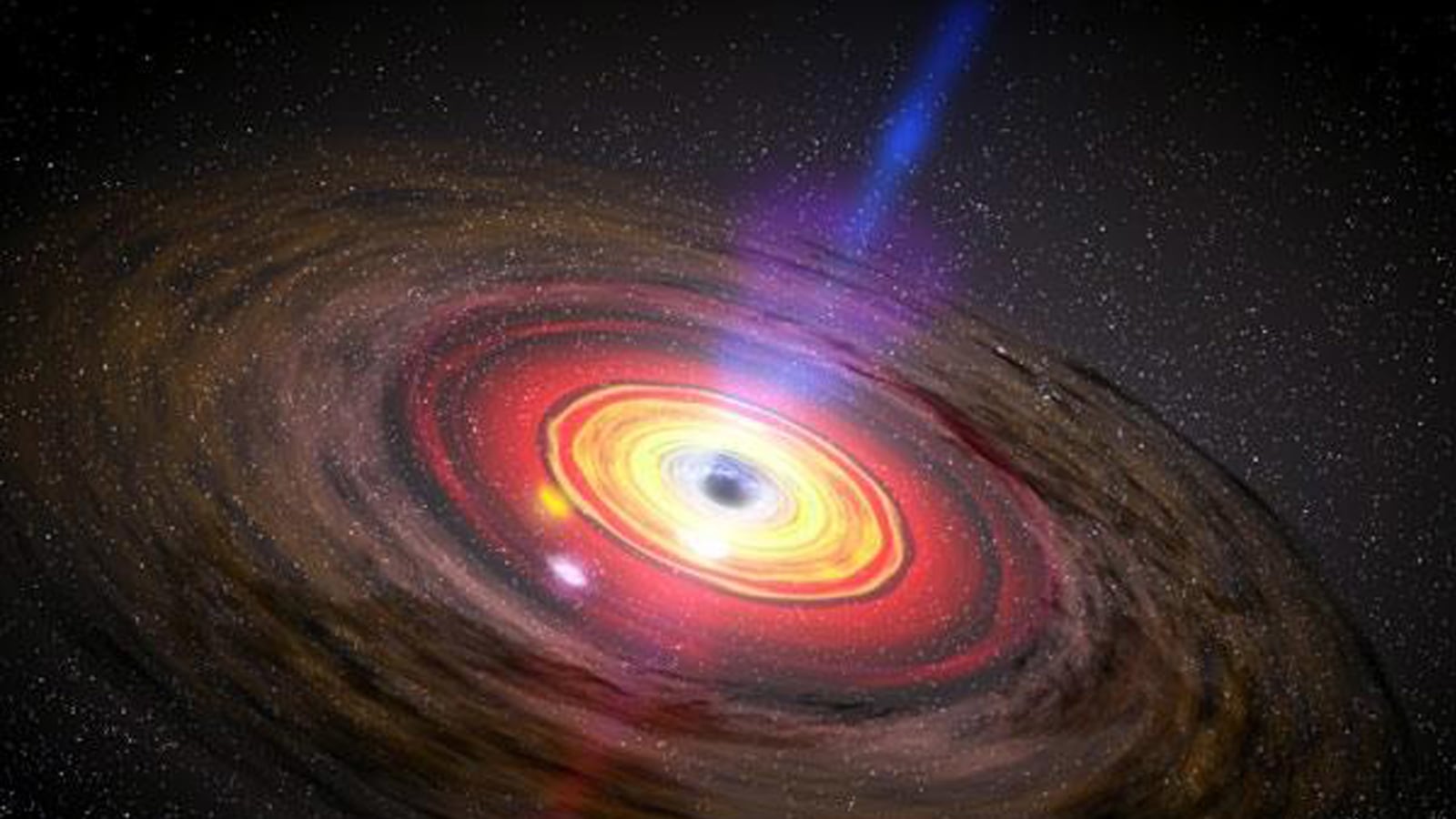Black holes are strange, seemingly paradoxical objects. By their nature, they are nearly invisible. Yet thanks to their powerful gravitational pull, they draw in matter, which causes some of them to shine brightly enough to be seen across the Universe. Black holes are known for what they devour, but the stuff they don’t eat is even more important, from the point of view of their host galaxies. Material streaming out from a black hole can influence the formation of stars, carve out bubbles in nearby regions, and alter the chemical balance of the galaxy itself.
Case in point: the spiral galaxy NGC 5548, which astronomers have been monitoring off and on for decades. NGC 5548 is an “active galaxy”, which means the huge black hole at its center is surrounded by hot gas that shines brightly in X-ray and ultraviolet (UV) light. However, researchers measured a decrease in X-ray emission last year: something new was blocking the light from reaching us.
Further observations showed that something was an incredibly fast flow of gas blowing outward from the black hole. We happen to be looking straight into that flow, as though a fan were turned on directly in our face. That’s a lucky break: while astronomers have measured similar outflows in other galaxies, this is the first time anyone has seen one from this angle, which provides a lot more detailed data than other viewpoints.
Between that privileged angle and the fact that researchers have watched the galaxy change over decades, we can see how outflows from black holes have shaped NGC 5548. After all, galaxies aren’t static environments, and studying their history is a way to understand the complex processes that control the birth of stars and planets.
Black holes are literally central to that galactic history. Astronomers discovered over the last few decades that nearly every large galaxy, including the Milky Way, harbors a black hole millions or billions of times more massive than the Sun. Gas orbiting these black holes heats up and glows brightly. Some of the matter is ejected away in the form of huge powerful jets (which also emit a lot of light).
For that reason, black holes can influence star formation, both positively and negatively. The flow of gas away from a black hole is called “wind” (not all scientific jargon is complicated!). Winds can either compress other clouds, heating them up and making stars, or break those clouds up. It’s a complex process, and one astronomers are still learning to understand.
A bug-eyed alien astronomer in a galaxy far, far away likely wouldn’t think of the Milky Way’s central black hole as particularly interesting. While it shows signs of past activity, our galaxy is pretty quiet now, but active galaxies like NGC 5548 are another matter.
Like Cookie Monster, many supermassive black holes are messy eaters. Their gravitational pull can draw in huge amounts of gas, which swirls in a thick donut-shaped pattern known as an accretion disk. (“Accretion” just refers to that gravitational gathering. It has the same root as “concrete”, which is a collection of rubble glued together by cement.)
What we actually see of a feeding black hole, then, depends on our viewing angle. If we’re observing it more or less “top down”, then we see the largest area of the accretion disk, maximizing the brightness of the black hole. That’s the case for NGC 5548, so the authors of the new paper were surprised to find that X-ray emissions in 2013 were 25 times weaker—4 percent!—of what they had been in 2002. Normal fluctuations in light are expected, but that’s well past typical.
However, we live in the best era of human history to study black holes. The researchers used an impressive array of observatories to monitor NGC 5548: the X-ray telescopes XMM- Newton, Swift, and Chandra, the Hubble Space Telescope (HST), the Nuclear Spectroscopic Telescope Array (NuSTAR), and the INTErnational Gamma-Ray Astrophysics Laboratory (INTEGRAL). All of these instruments orbit Earth, beyond the atmosphere that blocks X-rays and most ultraviolet light.
They found that in addition to the normal wind, the black hole had spewed out a lumpy cloud of gas, moving 5 times faster than typical outflow. They determined this by measuring absorption: clouds of gas aren’t equally opaque to all kinds of light, and the wavelengths they absorb depend on how fast the gas is moving. In this case, the rapid flow obviously was lying directly between the black hole and us, obscuring our view.
The black hole in NGC 5548 isn’t among the most powerful: other more active galaxies have winds like this flowing out on a more steady basis. However, those galaxies are also more distant, marking a time in the cosmic history when black hole food was more plentiful. (Those are the quasars I wrote about in my earlier column.)
Thanks to the relative proximity of NGC 5548 and the decades of observations astronomers have made of the galaxy, it’s a great place to study the fluctuations in black hole feeding behavior over time. The more we know about how black holes influence their environment, the greater our knowledge of galaxies in general—including perhaps how the chemical components of stars, planets, and life are distributed.






